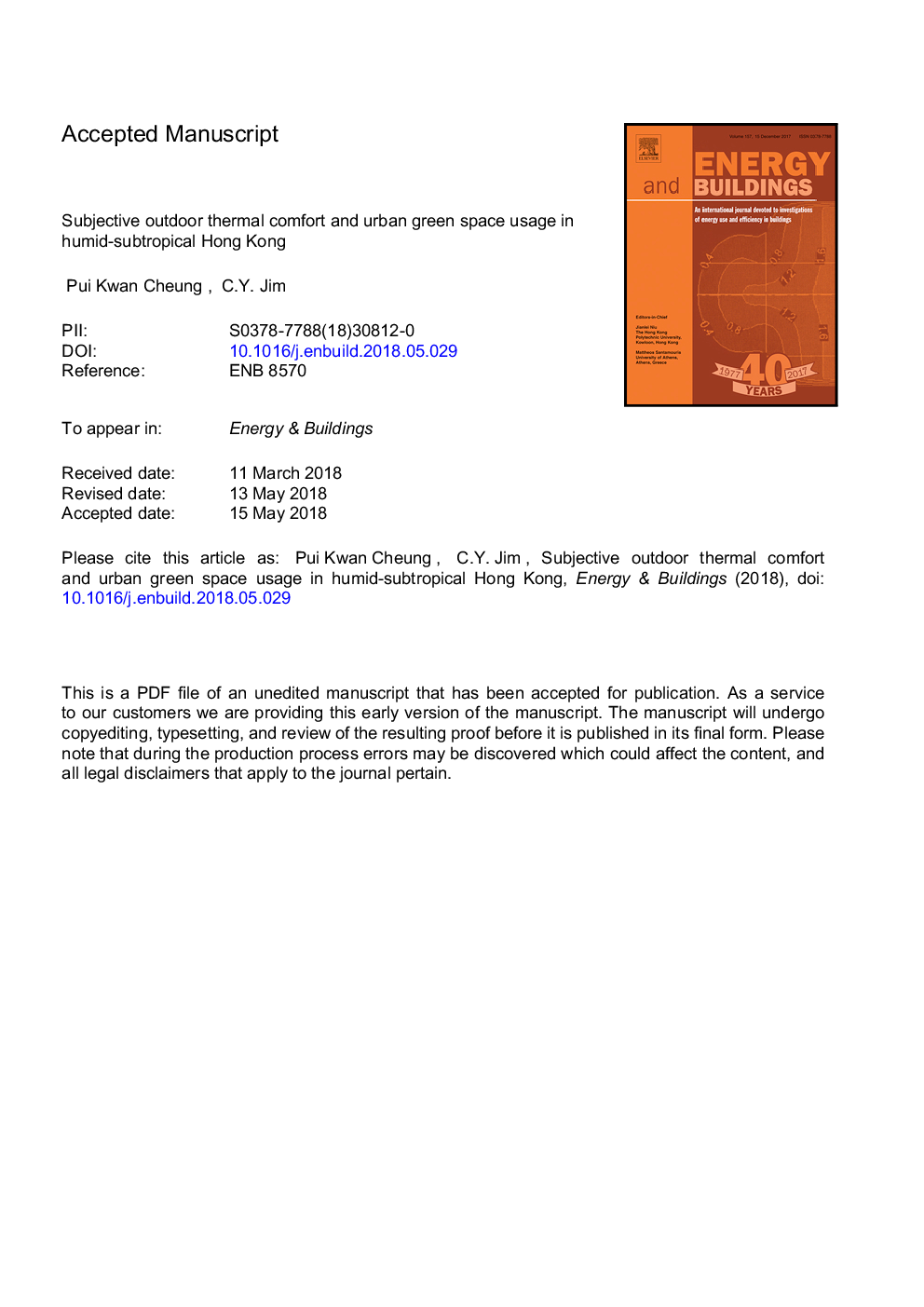| Article ID | Journal | Published Year | Pages | File Type |
|---|---|---|---|---|
| 6727337 | Energy and Buildings | 2018 | 44 Pages |
Abstract
Maximising outdoor space usage in hot weather in summer is conducive to energy saving as indoor cooling demand can be reduced. Understanding the subjective thermal perception is essential for landscape designers to optimise the thermal quality of outdoor spaces. A combined meteorological measurement and questionnaire survey was conducted in Hong Kong's summer. 427 valid questionnaires were collected. The 80% acceptable temperature ranges in PET and UTCI were 21.3 to 39.5°C and 22.7 to 38.8°C respectively. The questionnaire data showed that 35.6% of the respondents found it unacceptable to stay at the interview site for an extra one hour although only 9.1% of them felt unacceptable during the interview. A new benchmark range - 1-h 80% acceptable temperature range - is therefore proposed to assess the usability of outdoor space in the longer term. The proposed benchmark reduced the acceptable ranges to 21.3 to 27.3°C and 22.7 to 30.4°C in PET and UTCI respectively. The attendance of an exposed site was found to be a half of a tree-shaded site due to the shorter thermally acceptable time. Optimal wind speed was found to be 2.7â¯m/s, which is higher than the previously suggested range (1.0 to 2.0â¯m/s).
Related Topics
Physical Sciences and Engineering
Energy
Renewable Energy, Sustainability and the Environment
Authors
Cheung Pui Kwan, Jim C.Y.,
